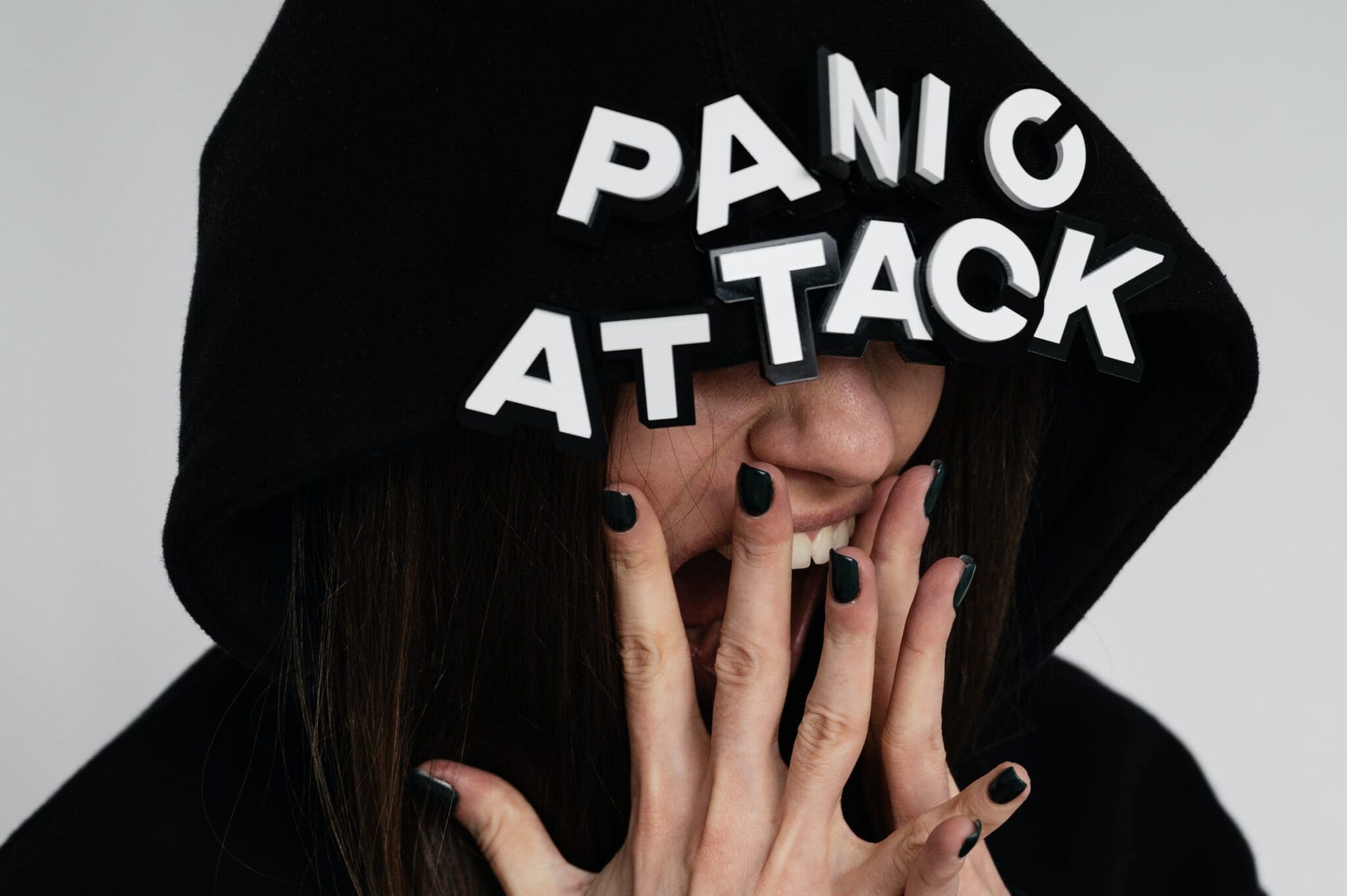Full Disclosure: Clicking on these links could mean a tiny commission for me, at no extra cost to you.
Panic disorder is a debilitating mental health condition that affects millions of people worldwide. Characterized by sudden and intense episodes of fear or discomfort, often accompanied by physical symptoms like heart palpitations, shortness of breath, dizziness, or abdominal distress, panic disorder can significantly impact an individual’s quality of life. This comprehensive guide aims to shed light on the nature of this anxiety disorder, exploring its causes, symptoms, and the most effective treatment options available. By understanding it more deeply, you’ll also be taking the first steps towards reclaiming your life.
Introduction to Panic Disorder
Panic disorder is more than just the occasional anxiety or fear that people experience. It is marked by recurrent, unexpected panic attacks that can lead to persistent worry about having another attack, avoiding situations thought to trigger an attack, and significant changes in behavior related to the attacks. With proper treatment and support, however, people with this type of anxiety disorder can lead a fulfilling and calmer life.
In the sections that follow, we will delve into the intricacies of panic disorder, from its underlying causes to the latest in treatment options. We’ll explore how genetics, environmental factors, and personal history contribute to the development of this condition, and how treatments like medication, psychotherapy, and lifestyle adjustments can offer relief and recovery.
As we embark on this comprehensive guide, remember that understanding and compassion are key. Whether you’re personally affected by panic disorder, supporting a loved one, or simply seeking to learn more about anxiety disorders, this guide is a step toward demystifying one of the most misunderstood aspects of mental health.
What is Panic Disorder?
Panic disorder is a type of anxiety disorder characterized by recurrent and unexpected panic attacks. These attacks are intense periods of fear or discomfort where four or more of the following symptoms develop abruptly and reach a peak within minutes:
- Heart Palpitations
- Accelerated Heart Rate
- Excessive Sweating
- Trembling or Shaking
- Sensations of Shortness of Breath
- Feelings of Choking
- Chest Pain or Discomfort
- Nausea or Abdominal Discomfort
- Dizziness, Lightheadedness, or Faintness
- Chills or Heat Flashes
- Paresthesia (Numbness or Tingling Sensations)
- Derealization (Feelings of Unreality)
- Depersonalization (Being Detached from Oneself)
- Fear of Losing Control or “Going Crazy”
- Fear of Dying
The frequency and severity of panic attacks can vary widely. Some people may experience anxiety attacks several times a week, while others may have them less frequently. The unpredictable nature of panic attacks often leads to persistent worry about when the next attack will occur, creating a cycle of fear and avoidance that can significantly impact daily functioning.
Prevalence and Impact on Quality of Life
Panic disorder affects about 2-3% of adults in the United States each year, with women being twice as likely as men to be diagnosed with the condition. The disorder can begin in adolescence or early adulthood, but not everyone who experiences panic attacks will develop panic disorder.
The impact of this mental health condition on quality of life can be profound. People with this type of anxiety may avoid places or situations where they fear a panic attack might occur, such as crowded spaces, driving, or even leaving their home. This avoidance can lead to significant limitations in personal, social, and professional life, contributing to feelings of isolation, depression, and reduced self-esteem.
Common Symptoms of Panic Disorder and Diagnosis
To be diagnosed with panic disorder, an individual must experience repeated panic attacks followed by at least one month of persistent concern about having more panic attacks, worry over the implications or consequences of the attacks, or a significant change in behavior related to the attacks. Diagnosis is typically made by a mental health professional who will evaluate the individual’s symptoms, history, and the impact of the symptoms on their life.
Understanding the symptoms and diagnostic criteria for panic disorder is crucial for early intervention and treatment. Early recognition of the signs can lead to more effective management of the condition, reducing its impact on an individual’s quality of life.
Understanding the Causes of Panic Disorder
The exact cause of panic disorder is not fully understood, but research suggests it’s likely a combination of genetic and environmental factors. Studies have shown that panic disorder can run in families, indicating a potential genetic predisposition to the condition. People with a first-degree relative who has panic disorder are up to eight times more likely to develop the condition themselves, highlighting the significant role of genetics.
Environmental factors also play a critical role in the onset of panic disorder. Traumatic events, such as the death of a loved one, divorce, or job loss, can trigger the development of panic attacks in people predisposed to anxiety disorders. Additionally, chronic stress, substance abuse, and significant life changes can contribute to the onset of panic disorder, illustrating the complex interplay between genetics and environment in the development of this condition.
The Role of Stress and Anxiety in Panic Disorder
Stress and anxiety are central to the development and perpetuation of panic disorder. The body’s natural response to stress involves the activation of the “fight or flight” response. This is a physiological reaction that prepares the body to either confront or flee from a threat. In people with panic disorder, this response can be triggered inappropriately in the absence of actual danger, leading to a panic attack.
Chronic stress can exacerbate this response, making individuals more susceptible to panic attacks. The constant state of heightened anxiety can lead to a cycle of fear—fear of experiencing another panic attack—which in turn increases stress and anxiety levels, creating a self-perpetuating cycle that can be challenging to break.
The Brain Chemistry Behind Panic Attacks
Neuroscience research has provided insights into the brain chemistry involved in panic disorder. Imbalances in neurotransmitters, such as serotonin, norepinephrine, and gamma-aminobutyric acid (GABA), have been implicated in the regulation of mood and anxiety. Abnormalities in these neurotransmitter systems can lead to increased anxiety and susceptibility to panic attacks.
Additionally, studies using brain imaging techniques have shown that certain areas of the brain, such as the amygdala and prefrontal cortex, are involved in the fear and anxiety response. The amygdala, known as the brain’s “fear center,” plays a critical role in processing emotional reactions, while the prefrontal cortex is involved in regulating these responses. Dysregulation in these brain areas can contribute to the heightened fear response seen in panic disorder.
Understanding the causes of panic disorder is essential for developing effective treatment strategies. By recognizing the genetic, environmental, and neurobiological factors that contribute to this anxiety condition, you can start creating a personalized treatment plan that addresses your unique needs and situation.
Treatment Options for Panic Disorder
Medication: Types, Benefits, and Side Effects
Medications are often used to treat panic disorder, helping to reduce symptoms and prevent panic attacks. The most commonly prescribed medications include:
- Selective Serotonin Reuptake Inhibitors (SSRIs): These are the first-line treatment for panic disorder and include medications such as fluoxetine (Prozac), sertraline (Zoloft), and paroxetine (Paxil). SSRIs help by increasing serotonin levels in the brain, which can improve mood and reduce anxiety.
- Serotonin-Norepinephrine Reuptake Inhibitors (SNRIs): Similar to SSRIs, SNRIs such as venlafaxine (Effexor) and duloxetine (Cymbalta) increase levels of serotonin and norepinephrine in the brain.
- Benzodiazepines: These are fast-acting sedatives that can quickly reduce panic attack symptoms. However, due to the risk of dependency, they are typically prescribed for short-term use only. Examples include alprazolam (Xanax) and clonazepam (Klonopin).
While medication can be effective in managing symptoms of panic disorder, they can also come with side effects, including nausea, headache, drowsiness, and dizziness. It’s essential for individuals to work closely with their healthcare provider to find the medication and dosage that works best for them, with the fewest side effects.
Psychotherapy Approaches: Cognitive Behavioral Therapy (CBT) and Exposure Therapy
Psychotherapy, particularly cognitive-behavioral therapy (CBT), has been shown to be an effective treatment for panic disorder. CBT focuses on identifying and challenging negative thought patterns and behaviors that contribute to panic attacks. Through CBT, individuals learn coping strategies to manage and reduce their anxiety.
Exposure therapy, a subset of CBT, involves gradual exposure to the situations or physical sensations that trigger panic attacks, in a controlled and safe environment. This exposure helps reduce fear and anxiety over time, as individuals learn that panic attacks are not dangerous.
Lifestyle Changes and Coping Strategies
In addition to medication and psychotherapy, making lifestyle changes can also help manage symptoms of panic disorder. This includes:
- Regular physical exercise, which can reduce anxiety and improve mood.
- Adequate sleep, as sleep deprivation can increase anxiety.
- Reducing or eliminating caffeine and alcohol, which can exacerbate anxiety symptoms.
- Stress management techniques, such as meditation, yoga, or deep-breathing exercises.
Support from family and friends can also play a crucial role in the recovery process. Sharing experiences and coping strategies in support groups can provide additional encouragement and understanding.
Exclusive Offer: Get Your First Month of Breathwork Free
The Importance of Support Systems: Family, Friends, and Support Groups
Support systems play a crucial role in managing panic disorder. Family and friends play a crucial part in providing emotional support, understanding, and encouragement. They can also assist in recognizing early signs of panic attacks and help develop strategies for coping and intervention.
Support groups, whether online or in-person, offer a sense of community and understanding that can be incredibly comforting. These groups provide a safe space for sharing experiences, tips, and encouragement.
Navigating Daily Life and Coping Strategies
Daily life with panic disorder may require various coping strategies to manage symptoms and prevent panic attacks. These can include:
- Breathing Techniques: Deep breathing exercises can help manage the physical symptoms of a panic attack.
- Mindfulness and Relaxation: Practices such as yoga, meditation, and progressive muscle relaxation can reduce overall levels of stress and anxiety.
- Healthy Lifestyle Choices: Regular exercise, a balanced diet, and sufficient sleep contribute to overall well-being and can lessen anxiety.
- Avoiding Triggers: While not always possible, identifying and avoiding known triggers can help reduce the occurrence of panic attacks.
Moving Forward: Hope and Healing
The journey through panic disorder is unique for each individual. With the right treatment, support, and coping strategies, it is possible to manage symptoms, reduce the impact of panic disorder on daily life, and move towards recovery.
Prevention and Early Intervention
While it may not always be possible to prevent panic disorder entirely, recognizing early signs and symptoms can lead to earlier intervention. Early intervention strategies can also help manage symptoms more effectively and prevent the progression to more severe forms of the disorder.
Recognizing Early Signs of Panic Disorder
Early signs of panic disorder can vary from person to person. However, they often include frequent and unexpected panic attacks, intense anxiety about having another attack, and changes in behavior to avoid potential triggers. Other early signs might include:
- Persistent worry or concern over health or daily problems
- Difficulty concentrating or feeling “on edge”
- Avoiding social situations or places where previous panic attacks occurred
Recognizing these signs can prompt individuals to seek help sooner, leading to earlier diagnosis and treatment.
Strategies for Prevention and Reducing the Risk
- Stress Management: Learning to manage stress through relaxation techniques, exercise, or mindfulness can reduce the overall incidence of panic attacks.
- Healthy Lifestyle Choices: Engaging in regular physical activity, maintaining a healthy diet, and ensuring adequate sleep can improve mental health and resilience.
- Building a Strong Support Network: Establishing a solid support system of family, friends, and possibly a professional therapist can provide the emotional support needed to manage anxiety.
- Education: Understanding panic disorder and its symptoms can demystify the experience of panic attacks, reducing fear and stigma.
The Future of Panic Disorder Treatment: Research and Innovations
Research into panic disorder is ongoing. New treatments and interventions will offer more personalized and effective care. Innovations in digital health, such as online therapy platforms and apps designed to help manage anxiety and panic attacks, are becoming increasingly popular. These tools can make treatment more accessible and less intimidating for many people.
Plus, advances in understanding the genetic and neurobiological underpinnings of panic disorder may lead to more targeted and effective treatments in the future. Continued research and innovation are vital to improving outcomes for those living with panic disorder.
Exclusive Offer: Download The #1 Mindfulness App Here
Conclusion
Panic disorder, characterized by unexpected and intense panic attacks, presents significant challenges to those affected. However, with the right approach to treatment, you can regain control over your life and reduce the impact of this mental health disorder. The journey towards recovery is personal and may require trying different treatments to find what works best for you.









